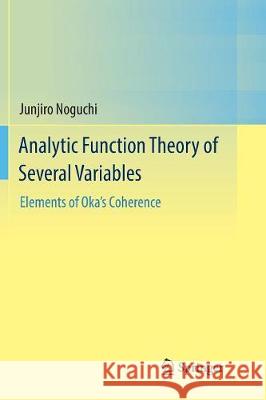Analytic Function Theory of Several Variables: Elements of Oka's Coherence » książka
topmenu
Analytic Function Theory of Several Variables: Elements of Oka's Coherence
ISBN-13: 9789811091247 / Angielski / Miękka / 2018 / 397 str.
Kategorie:
Kategorie BISAC:
Wydawca:
Springer
Język:
Angielski
ISBN-13:
9789811091247
Rok wydania:
2018
Wydanie:
Softcover Repri
Ilość stron:
397
Waga:
0.58 kg
Wymiary:
23.39 x 15.6 x 2.18
Oprawa:
Miękka
Wolumenów:
01
Dodatkowe informacje:
Wydanie ilustrowane











